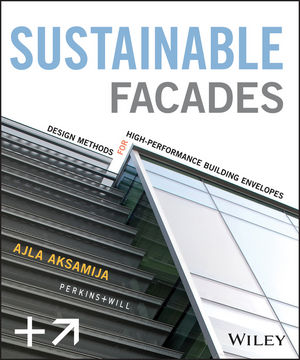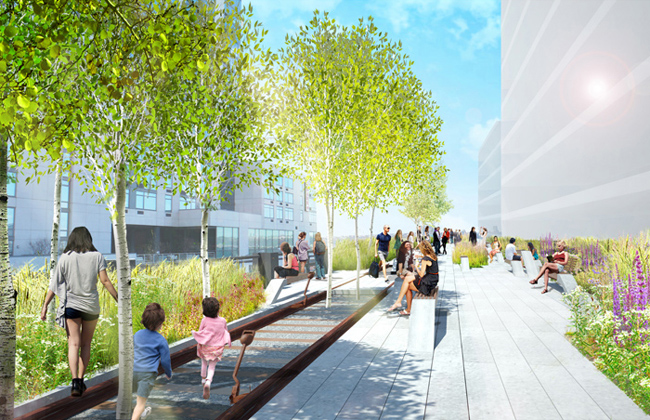Third Phase of High Line Sets Tone for Neighboring Development
























Literally. Just as Friends of the High Line was releasing renderings of phase three this week, Related announced that it had chosen an architect for the first residential tower in the Hudson Yards: Diller Scofidio + Renfro. The firm, whose offices overlook the High Line, has never done a high-rise building. Partner Ricardo Scofidio says he is excited about the commission. "One can argue that most architects do their best building when it’s the first commission of a type,” he says. “You're not pulling details out of a drawer."
Nor is phase three of the High Line a repeat of earlier sections. Renderings show visitors walking on railroad tracks (in the first two phases tracks were relegated to flower beds or embedded in paving). “It’s how people really want to do to it: walk on the rails,” says Robert Hammond, co-founder and executive director of Friends of the High Line. Other innovations in phase three include a free-form spiral stairway at 11th Avenue and 30th Street, a proposed amphitheater at 10th Avenue and 30th Street, and a whole lot of new “furniture” that seems to rise out of the paving—mimicking the “peel up” benches of the first two phases. There will also be a play space for children, created by exposing some of the beams that support the elevated structure. (Click on the slide show above to view the renderings.)
One section of the defunct railway—a spur that heads east from the “main line” at 30th Street—will nestle into a 70-foot cutout at the base of what is being called Tower C, a 51-story building designed by Kohn Pedersen Fox for the southeast corner of Hudson Yards. Hammond says that the 70-foot clearance will be enough to create a dramatic passageway, comparable to the High Line’s tunnel under the Standard Hotel in the Meat Packing district. And in case there is any doubt about Related’s decision to embrace the High Line, when the developer released renderings of Tower C, the High Line was prominently featured in the foreground.
For the High Line, this represents a dramatic change of fortune in just seven years. In 2005, the Bloomberg administration was hoping to build a football (and Olympics) stadium on the Hudson Yards site. Many renderings for the project showed it without the High Line. Even after the stadium plan collapsed, developers told New York’s Metropolitan Transportation Authority, owners of the Hudson Yards property, that it would have to demolish the line to make the parcel worth building on, Hammond recalls.
Some parts of phase three—also being called the High Line at the West Side Rail Yards—may open as early as the spring of 2014. But there are caveats. According to a High Line press release, “The timeline for construction is subject to fundraising and the timing of capital funding required by zoning” (the latter a reference to funds the city will expect Related to contribute). So far, the organization has raised $38 million of the estimated $90 million needed to build phase three.
Meanwhile, there is so much uncertainty about what the western portion of the Hudson Yards will look like that the sections of the High Line west of 11th Avenue have yet to be designed. Instead, the architects have proposed creating an “interim” walkway, a simple path that would pass through the existing, overgrown sections of the elevated rail bed. Eventually, the original structure will have to be renovated, Hammond says. But until that happens (and it could be a decade or more), the interim walkway will provide visitors with a chance to experience the High Line in its raw state—the way he and his co-founder Joshua David first saw it in the 1990s. Says Hammond of the temporary path, “It will feel completely different—and much wilder—than the first two phases. It’s what we always wanted, what we envisioned at the beginning. I think people will really love it.”
For all the architectural fireworks of the first two phases, Scofidio agrees: “I think there’s something nice about being able to see the High Line as it was.”













